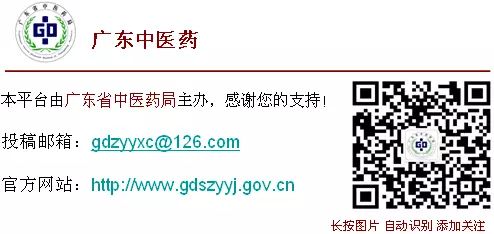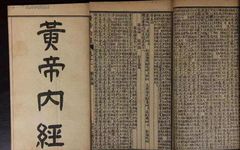
▲ The Huangdi Neijing is divided into two parts: Suwen and Lingshu, and is one of the earliest medical texts in China, recognized as one of the four classic works of traditional medicine (the other three being the Nanjing, Shanghan Zabing Lun, and Shennong Bencao Jing).
Translation of Cold and Heat Text:
【Original】Huangdi asked Qibo: What qi causes the cold and heat lymphadenopathy in the neck and armpits?
【Translation】Huangdi asked Qibo: The cold and heat lymphadenopathy often occurs in the neck and armpits; what is the reason for this?
【Original】Qibo said: This is all due to the cold and heat toxic qi of the mouse disease, which lingers in the meridians and does not disperse.
【Translation】Qibo replied: This is the result of the cold and heat toxic qi of the mouse disease lingering in the meridians and not being eliminated.
【Original】Huangdi said: How can it be removed?
【Translation】Huangdi asked: Can this disease be eliminated?
【Original】Qibo said: The root of the mouse disease lies in the organs, and its symptoms appear in the neck and armpits. If the toxic qi is floating in the superficial meridians and has not penetrated deeply into the muscles to rot into pus and blood, it is easy to treat.
【Translation】Qibo answered: The mouse disease originates in the internal organs, and its symptoms manifest only in the neck and armpits. If the toxic qi is merely floating in the superficial meridians and has not settled deeply into the muscles to fester into pus and blood, it is easy to treat.
【Original】Huangdi said: How should it be treated?
【Translation】Huangdi asked: How should treatment be conducted?
【Original】Qibo said: One should treat from the root to address the branches, which can help diminish the symptoms and eliminate the cold and heat. Carefully examine the pathways to administer treatment, and proceed slowly to remove it. For those as small as millet, one puncture is sufficient; three punctures will suffice for recovery.
【Translation】Qibo replied: Treatment should start from the root of the disease to support the righteous qi and promote the dispersal of the external lymphatic toxic evil, thereby alleviating the cold and heat symptoms. Additionally, one must carefully observe the affected organs and meridians to select acupuncture points for treatment. During acupuncture, insert and withdraw the needle slowly to achieve the goal of supporting the righteous and expelling the evil. For early-stage lymphadenopathy, if the size is as small as a grain of millet, one puncture will show effect, and three punctures will lead to recovery.
【Original】Huangdi said: How can one determine its prognosis?
【Translation】Huangdi asked: How can the prognosis of lymphadenopathy be determined?
【Original】Qibo said: Examine the eyes; if there are red veins that penetrate the pupil, it indicates a worsening condition. If one red vein is seen, death will occur within a year; if one and a half veins are seen, death will occur within a year and a half; if two veins are seen, death will occur within two years; if two and a half veins are seen, death will occur within two and a half years; if three veins are seen, death will occur within three years; if only red veins are seen without penetrating the pupil, it can be treated.
【Translation】Qibo answered: The method to determine the prognosis of lymphadenopathy is to examine the patient’s eyelids. If there are red veins in the eyes that penetrate the pupil, it is a sign of worsening condition. If one red vein is seen, the patient is expected to die within a year; if one and a half veins are seen, death is expected within a year and a half; if two veins are seen, death is expected within two years; if two and a half veins are seen, death is expected within two and a half years; if three veins are seen, death is expected within three years; if only red veins are seen without penetrating the pupil, it can still be treated.
■
【Source: Huangdi Neijing Network, this article is compiled according to the “Huangdi Neijing Lingshu Baihua Jie” edited by Wang Hongtu and He Juan, People’s Health Publishing House】


